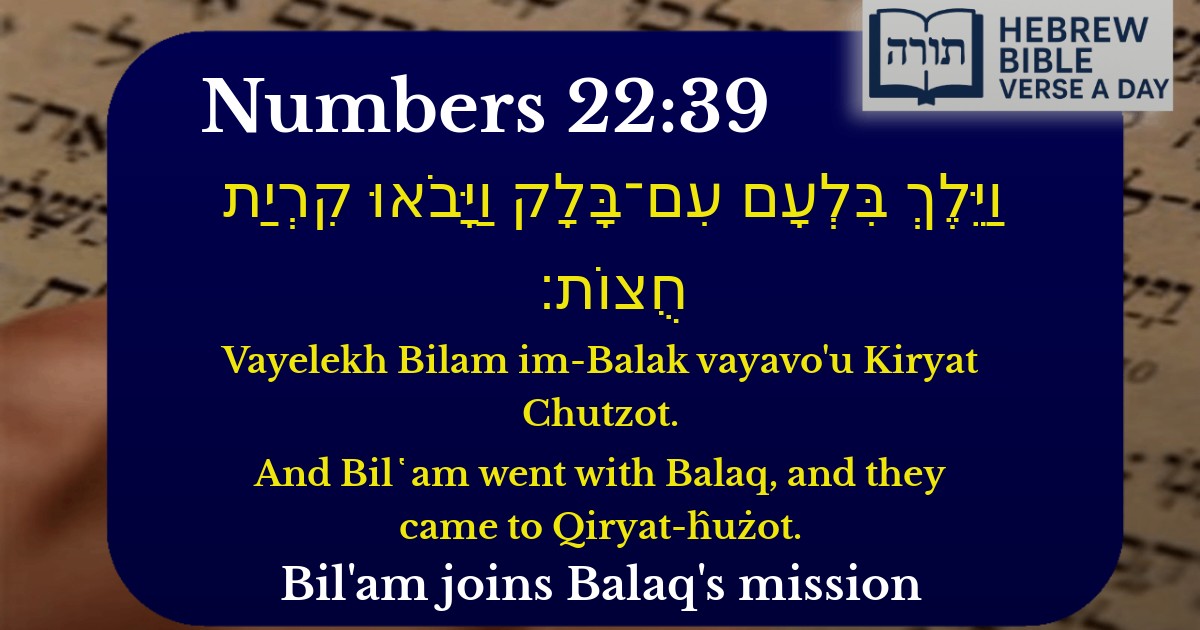Frequently Asked Questions
Q: Who was Bil'am in the Torah?
A: Bil'am (Balaam) was a non-Jewish prophet hired by King Balak to curse the Jewish people. Despite his spiritual gifts, he had wicked intentions, as described in the Torah (Numbers 22-24). The Talmud (Sanhedrin 105b) discusses his negative traits and contrasts him with Jewish prophets.
Q: Where is Kiryat Chutzot mentioned in the Torah?
A: Kiryat Chutzot is mentioned in Numbers 22:39 as the place where Bil'am and Balak met. Rashi explains it was a city at the edge of Moab's territory, possibly named for being 'outside' (chutzot) the main inhabited area. It served as a meeting point before Bil'am attempted to curse Israel.
Q: Why did Balak take Bil'am to Kiryat Chutzot?
A: According to Midrash Tanchuma (Balak 8), Balak brought Bil'am to Kiryat Chutzot to show him the Israelite camp from a distance before attempting to curse them. Rashi notes this location was strategically chosen to give Bil'am a view of part of the Israelite encampment.
Q: What lesson can we learn from Bil'am going with Balak?
A: The Talmud (Avot 5:19) teaches that Bil'am represents those with an 'evil eye' (selfish outlook), contrasting with Abraham's generosity. This verse shows his willingness to harm others for personal gain. The Rambam (Hilchot De'ot 1-2) derives lessons about proper character traits from such negative examples.
Q: How is this story relevant today?
A: This narrative teaches about divine protection (Hashem turned Bil'am's curses to blessings) and the danger of negative speech. The Chofetz Chaim emphasizes how the Bil'am story warns against harmful speech (lashon hara), showing even a wicked prophet's words had power that needed redirection to blessings.


Understanding the Journey of Bil'am and Balaq
The verse states: "And Bil'am went with Balaq, and they came to Qiryat-ĥużot" (Bamidbar 22:39). This marks a pivotal moment in the narrative of Bil'am's attempt to curse the Jewish people. The journey to Qiryat-ĥużot ("City of Streets") is laden with symbolic and halachic implications, as discussed by classical commentators.
Rashi's Explanation
Rashi (Bamidbar 22:39) notes that Qiryat-ĥużot was a place where roads converged, suggesting it was a crossroads or marketplace. He explains that Balaq took Bil'am there to demonstrate the vastness of the Israelite camp, hoping to provoke Bil'am's envy or anger, thereby motivating him to curse them. This aligns with the broader theme of Balaq's strategy—using Bil'am's spiritual prowess against Klal Yisrael.
Symbolism of Qiryat-ĥużot
The Midrash (Bamidbar Rabbah 20:12) elaborates that the name "City of Streets" alludes to the moral and spiritual crossroads Bil'am faced. Just as streets branch in multiple directions, Bil'am had a choice: to follow the path of righteousness (by refusing to curse Israel) or to succumb to Balaq's wicked intentions. The location thus serves as a metaphor for moral decision-making.
Rambam's Perspective on Free Will
Rambam (Hilchot Teshuvah 5:1-3) emphasizes that every individual, including Bil'am, possesses free will. The journey to Qiryat-ĥużot underscores this principle—Bil'am could have turned back at any moment, yet he chose to proceed. His eventual failure to curse Israel (as Hashem transformed his words into blessings) demonstrates Divine intervention, but only after Bil'am exercised his own flawed judgment.
Halachic Implications
Conclusion from Orthodox Jewish Sources
This verse, while seemingly a simple description of travel, encapsulates profound lessons about free will, moral choices, and the dangers of associating with resha'im. The commentaries reinforce that physical journeys often mirror spiritual ones, and every step—whether toward Qiryat-ĥużot or away from it—carries eternal significance.